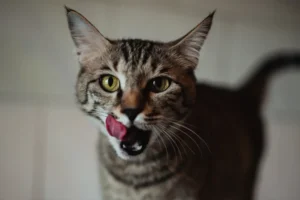Disclosure: We may earn a commission from helpful, relevant links in our content. No cost to you. See our privacy policy.
Let’s talk cat food!
If you’re a cat parent, you know how tricky it can be to pick the right meal for your feline friend. Is your kitten getting enough protein? Does your adult cat need that diet formula? Is your senior kitty missing out on crucial nutrients?
These questions, and many more, often crowd the mind of a diligent cat owner. With so many products on the market, understanding the nutritional needs of your cat at different life stages can seem overwhelming.
But rest assured, you’ve come to the right place. We’re diving into the nitty-gritty of cat nutrition to give you a clearer picture. Let’s start with the most common question: What’s the difference between kitten, adult, and senior cat food?
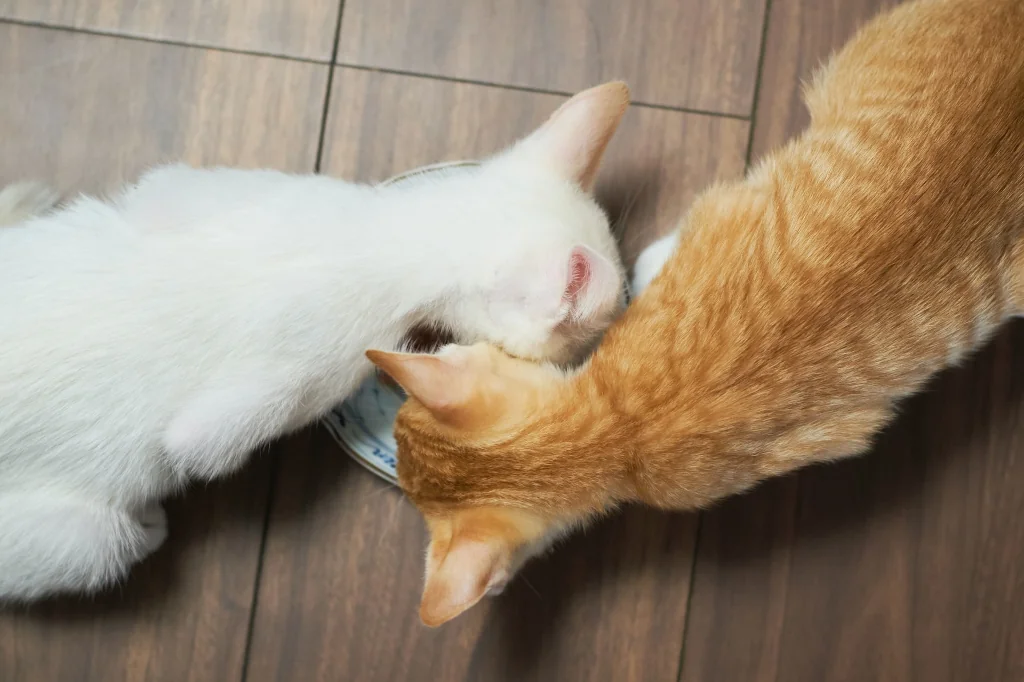
Why Do Cat’s Nutritional Needs Vary for Different Life Stages?
Just like how children, adults, and seniors in your human family have different nutritional needs, so too do kittens, adult cats, and senior cats. Cats, at different stages of their lives, go through various physiological changes.
Kittens, with their endless energy and rapid growth, require food that is high in protein and calorie-dense to fuel their playful antics and development. They need essential nutrients that promote brain, bone, and overall growth.
Adult cats, on the other hand, have finished growing. Their nutritional needs shift towards maintaining a healthy weight and sustaining their body’s regular functions. A balance of protein, fats, and carbohydrates is essential here, alongside vital vitamins and minerals for overall health.
Senior cats, similar to senior humans, tend to be less active and have slower metabolic rates. They require fewer calories to prevent unhealthy weight gain but need high-quality protein to help maintain muscle mass. Plus, they may require more of certain nutrients that support joint health and organ function as these can decline with age.
In essence, the life stage of your cat significantly determines the nutrients they need, the quantity they require, and the type of food that will best provide this. Feeding your cat based on their life stage is key to ensuring they live a happy, healthy, and fulfilling life.
Nutritional Needs: Kittens vs Adult Cats vs Senior Cats
To tailor your cat’s diet to their life stage, you need to understand their unique nutritional needs. Let’s dive in.
Kitten Nutrition: Building a Healthy Start
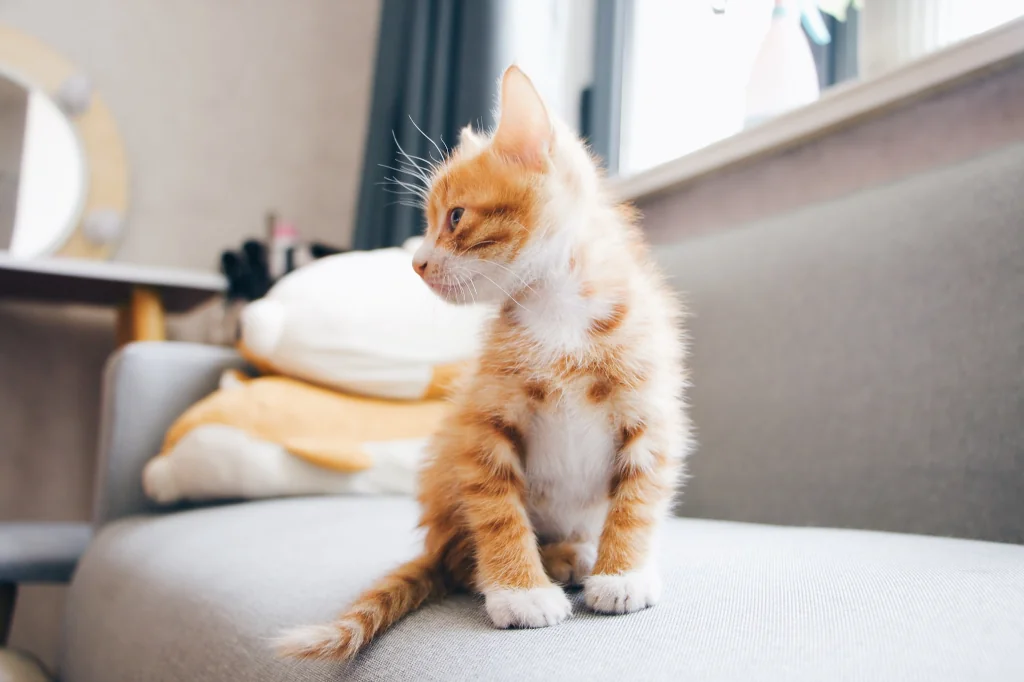
Kittens are tiny balls of energy, and their diet should support their rapid growth and development.
Protein: A kitten diet should be high in protein, approximately 35-50% of their diet, to fuel their growth and maintain lean muscle mass. Look for quality animal-based proteins as the first ingredient.
Fat: Fats are crucial for brain development and provide the necessary calories for their active lifestyle. About 25% of their diet should come from fat.
DHA: Docosahexaenoic Acid (DHA) is a type of omega-3 fatty acid that is crucial for a kitten’s brain and vision development. It should be included in the diet but specific amounts can vary.
Taurine: This essential amino acid supports a kitten’s heart and eye health. Ensure your kitten food has added taurine, generally around 0.1% of the diet.
Minerals: Calcium and phosphorus are important for bone development. Typically, a ratio of 1.2:1 (Calcium:Phosphorus) is recommended. This means for every 1.2 grams of calcium, there should ideally be 1 gram of phosphorus.
Adult Cat Nutrition: Maintaining Wellbeing
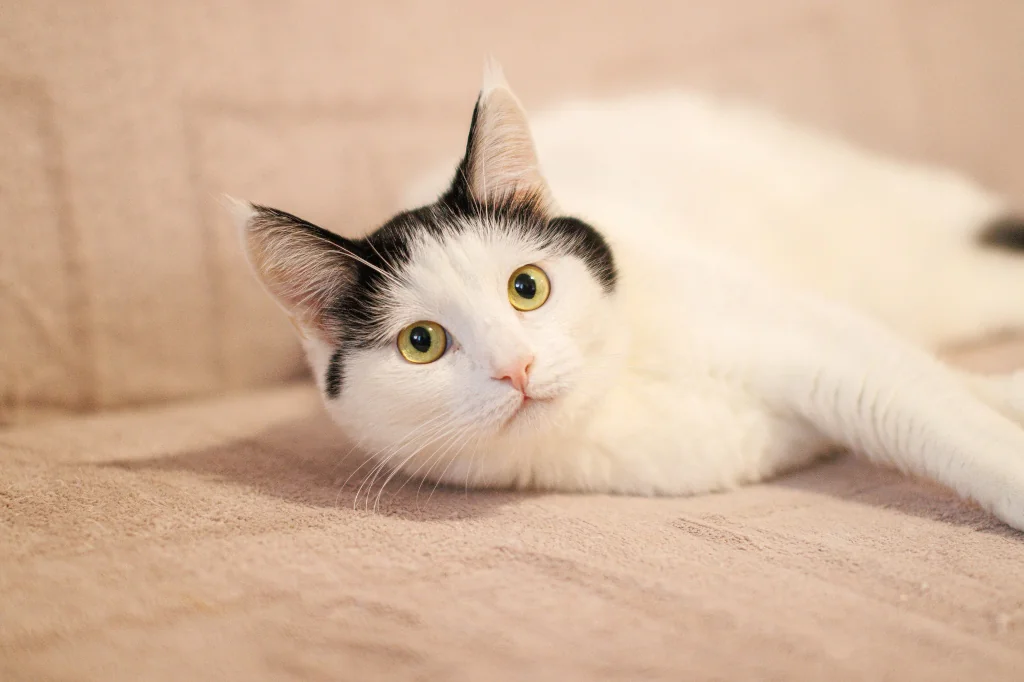
As your cat matures, their nutritional needs shift from growth to maintenance.
Protein: Adult cats still need a protein-rich diet, but not as much as kittens. Around 30-40% of an adult cat’s diet should be high-quality protein.
Fat: An adult cat’s diet should have moderate fat content, about 10-15%, to provide necessary energy without contributing to weight gain.
Fiber: A diet with adequate fiber, roughly 3-5%, can help manage weight and support digestive health in adult cats.
Vitamins and Minerals: A balanced diet rich in essential vitamins and minerals supports overall health and well-being.
Senior Cat Nutrition: Supporting the Golden Years
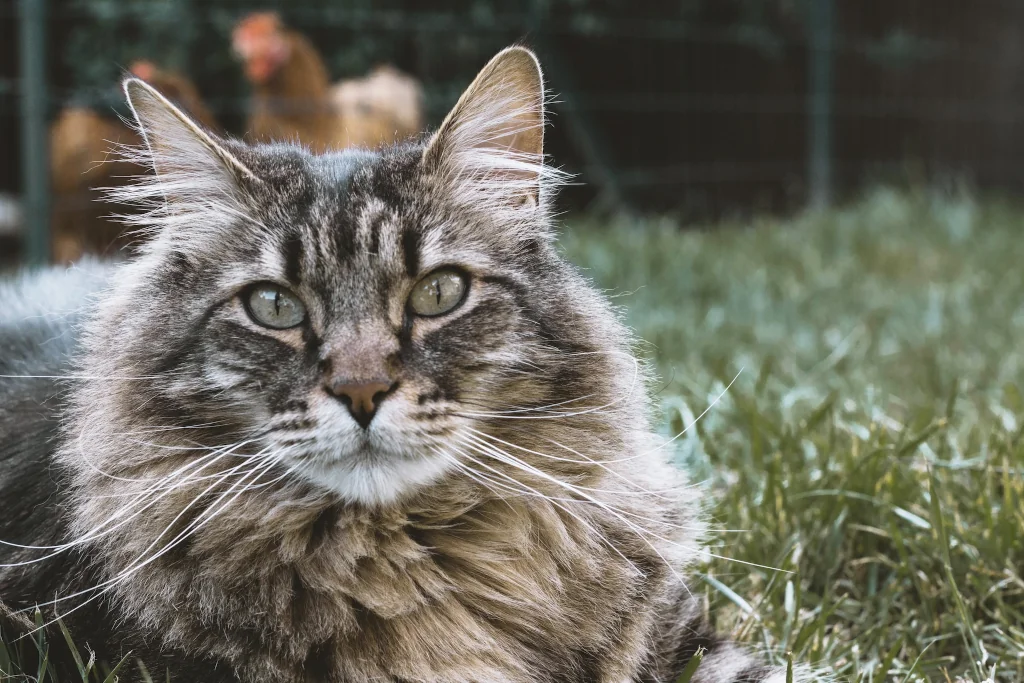
Senior cats have unique nutritional needs to support their aging bodies.
Protein: While senior cats need less energy, they still require high-quality protein, about 30-40% of their diet, to maintain muscle mass and support overall health.
Lower-Fat, Lower-Calorie: As their metabolism slows, senior cats can be prone to weight gain. A diet lower in fat, around 10-15%, and calories, but still nutrient-rich, can help maintain a healthy weight.
Fiber: Increased fiber, about 3-5% of the diet, can help with digestion, which can slow in older cats.
Joint Support: Ingredients like glucosamine and chondroitin can support joint health, while omega-3 fatty acids can aid in reducing inflammation. The amounts of these nutrients can vary, and specialized senior cat food may have these already included.
Avoid Phosphorus and Sodium: Senior cats should not be fed too much phosphorus or sodium, as excess phosphorus damages the kidney, while excess sodium contributes to kidney disease and hypertension.
Here’s a table summarizing the nutritional needs of cats at different life stages:
| Life Stage | Protein | Fat | DHA | Taurine | Minerals | Fiber | Special Nutrients |
|---|---|---|---|---|---|---|---|
| Kitten | 30-35% | 25% | Yes | Yes | Ca:P – 1.2:1 | – | – |
| Adult | 25-30% | 10-15% | – | – | Balanced | 3-5% | – |
| Senior | 30-35% | 10-15% | – | – | Balanced | 3-5% | Glucosamine, Chondroitin, Omega-3 |
Remember, every cat is unique, and these are general guidelines. Always consult with your vet to tailor a diet plan that suits your cat’s individual needs. To learn more, visit our guide on cat food ingredients.
Now let’s look at the type of food your cat should be eating at these life stages.
Wet vs Dry Food for Kittens, Adult, and Senior Cats
The wet vs dry debate is a long-standing one in the world of cat nutrition. Both types have their benefits, and a balance might be the ideal solution.
Wet Food for Kittens
Wet food is often a good choice for kittens because it’s easier to eat and hydrate. The high moisture content helps prevent dehydration, and the texture makes it palatable for young kittens who are still developing their teeth. However, introducing some dry food at this stage can help in dental health.
A Mix for Adult Cats
For adult cats, a mix of wet and dry food often works well. Wet food ensures they get enough hydration (especially if they’re not big drinkers), and dry food can be beneficial for their dental health. Remember that the calorie content of wet food is often less than dry food, so portion sizes may need adjusting.
Suggested reading: Dry Cat Food Nutrition Guide
Mostly Wet Food for Senior Cats
As cats age, they may face dental issues or lose interest in food. Wet food can be easier to eat and more appealing for them, ensuring they get the nutrients they need. However, a mix can still be beneficial if their dental health allows.
Remember, the type and amount of food your cat needs can vary based on their health, activity level, and individual preferences. Always consult your vet for personalized advice.
Might be interested in: Raw Cat Food Pros & Cons
Kitten vs Adult vs Senior Cat Food: Recommendations
One key factor often overlooked by cat owners is how age impacts the formulation of cat food, influencing not only the nutrient content but also aspects like flavor, texture, and kibble size.
For instance, kittens, with their tiny teeth, may find smaller kibbles easier to consume. Brands like ‘Royal Canin’ offer stage-specific products such as Royal Canin Kitten Dry Cat Food, which is tailored for kittens between 4 and 12 months of age. This nutritionally complete food provides everything your growing kitten needs.
On the other hand, adult cats might enjoy a variety of textures – brands like ‘Purina ONE’ cater to this need with their Purina ONE Tender Selects Blend. It’s a mix of crunchy and tender pieces, packed with protein to support strong muscles and overall health.
For older felines, who might have dental issues, softer food such as Hill’s Science Diet Senior Wet Cat Food could be a preferred choice, as it offers a soft texture and balanced nutrients tailored for cats aged 7 and up. Its easy-to-digest ingredients help support energy levels and maintain a healthy weight as your cat ages.
Remember, your cat’s dietary needs evolve over time – the perfect cat food for each life stage addresses these changes adequately
Suggested read: Guide to Cat Food Labels
Now, let’s tie all this together and relate it back to your furry friend at home.
Feeding Through the Looking Glass: A Nutritional Perspective
It’s fascinating how cat food isn’t just about nourishment but a reflection of your cat’s life journey. As your kitten sprouts into an adult and gradually embraces its senior years, their dietary roadmap changes, much like turning pages of a life-story book. Brands that cater to these transitions aren’t just offering food but a tailored service attuned to age-specific needs.
However, here’s the twist: it’s not about ‘feeding’ but about ‘nourishing.’ As a cat parent, you provide more than meals; you offer an evolving food experience that meets their changing nutritional demands. You hold the power to make your cat’s mealtime about love, health, and contentment. So, embrace this journey with your vet’s advice, understanding that every purr of satisfaction is a testament to your care.
Related: How to Choose Dry Cat Food
FAQs
Can an adult cat eat kitten food?
While kitten food won’t harm an adult cat, it is not ideally suited to their nutritional needs as it’s formulated for growth and development, which means it’s higher in calories and nutrients than adult cat food.
What are some dietary supplements for senior cats?
Senior cats often benefit from supplements like omega-3 fatty acids for joint health, probiotics for digestion, and antioxidants for overall wellness. However, any supplement should be given under a vet’s guidance.
Are there specific foods to enhance my adult cat’s fur health?
Foods rich in omega-3 and omega-6 fatty acids, fish or flaxseeds, can promote healthier skin and shinier fur in cats. Additionally, many high-quality cat foods include these nutrients in their formulation.
How do I transition my kitten to adult cat food?
Gradually introduce adult cat food into your kitten’s diet over a week or so, starting with a mix of 75% kitten food and 25% adult food, and gradually increase the proportion of adult food until the transition is complete.
Alex, a passionate animal lover, has experience in training and understanding animal behavior. As a proud pet parent to two dogs and three cats, he founded AnimalReport.net to share insights from animal experts and expand his knowledge of the animal kingdom.




